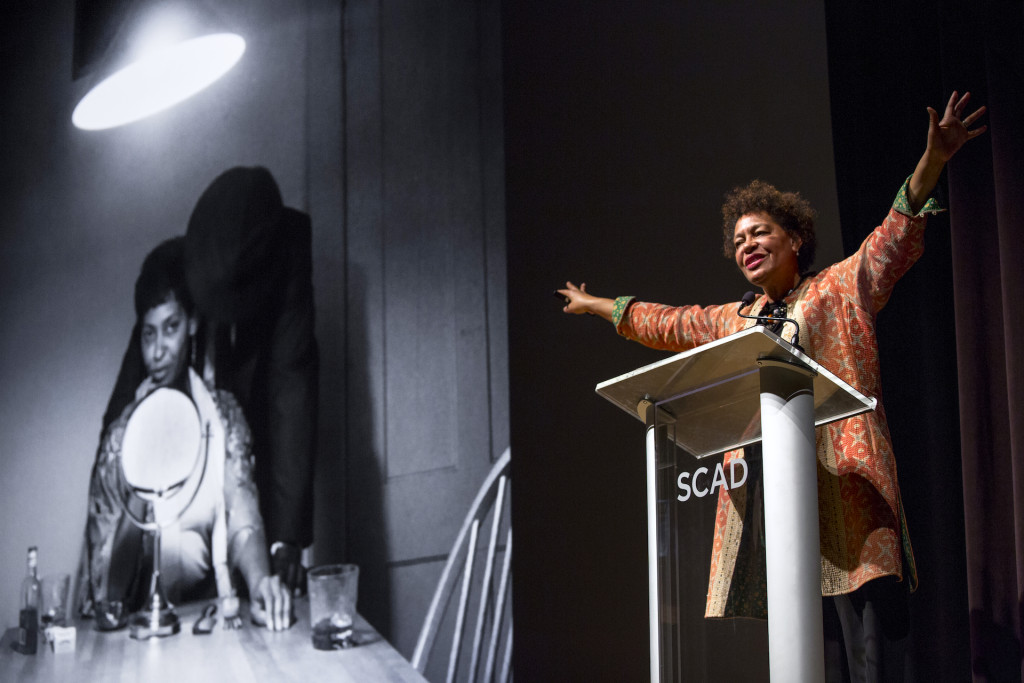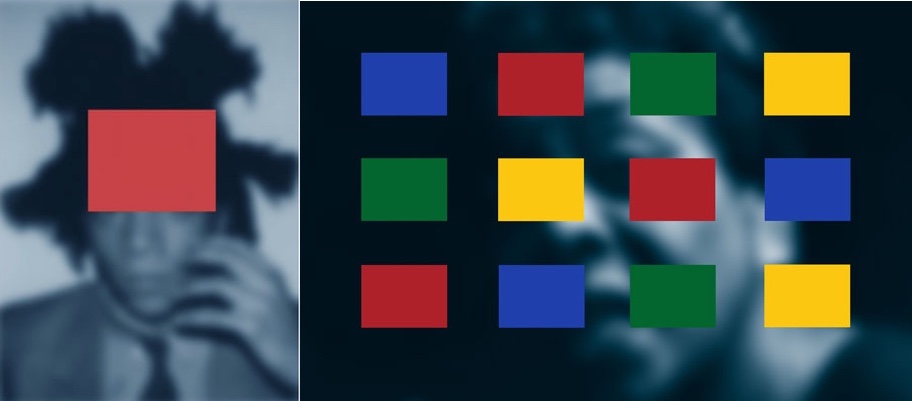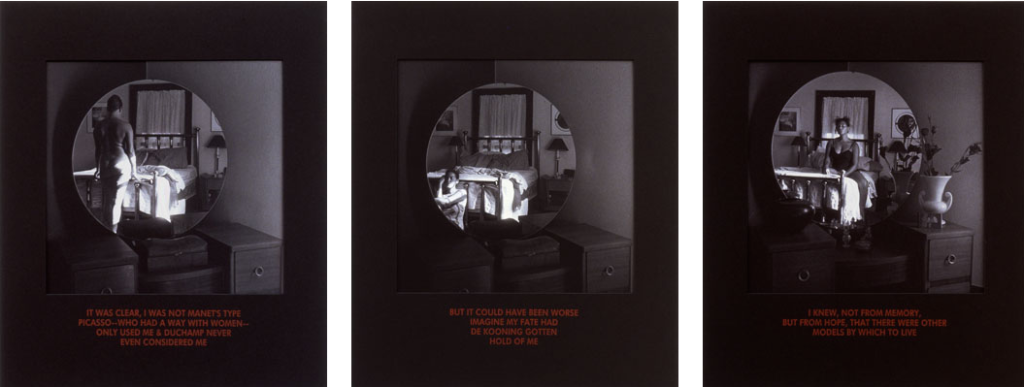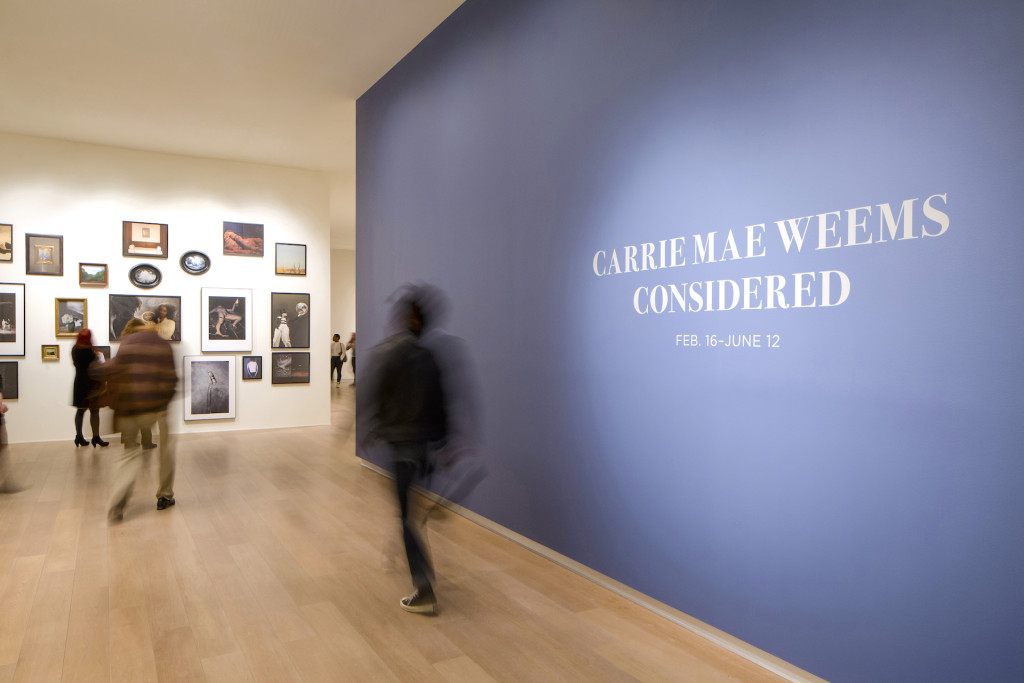
Carrie Mae Weems, Savannah College of Art and Design, Trustees Theater, Savannah, GA, For deFINE ART, 2016
Carrie Mae Weems was recently celebrated at the Savannah College of Art and Design (SCAD) during deFINE ART, where she was selected as an honoree and keynote speaker. She presented a lecture to a packed house of students, faculty and invited guests at the Trustees Theater in downtown Savannah that left nary a dry eye. Corresponding with the talk, an exhibition titled Considered of select photographic works along with a video, curated by Isolde Brielmaier, is on view at the SCAD Museum of Art until June 12th, 2016. Not taking the practice of picture making lightly, Weems delves into a very human, psychological space that is often not visually occupied, specifically by women. She is not afraid of her blackness, she is not afraid of her femininity, she is not afraid to be present and be seen where others are expected to disappear. A speaking and visual voice like no other, Weems takes on history with a marked interjection, constructing her own narrative which is really all of our narratives. The work is as silent as it is loud, monochromatic as it is colorful. In Considered, Brielmaier has brought together a series of framed photographs that function as a small-scale retrospective, allowing those in Savannah to taste the bitter pill the artist has delightfully, if also begrudgingly, swallowed and given voice to. Carrie Mae Weems uses visual poetics and her own body, composed through the lens of a camera.

Carrie Mae Weems, From the “Blue Notes” series 2014-15, (Left) “Blue Notes 4 (Basquiat), (Right) “Color, Real, Imagined” Digital c-print © Carrie Mae Weems. Courtesy of the artist and Jack Shainman Gallery, New York Carrie Mae Weems on view as part of “Considered” at SCAD, 2016
A bitter pill, might not be the best way to describe a tough subject matter from recent American history, but facing it head on is what sets Weems apart. Her deliberate proposed narratives tell tales of the power dynamics in domestic situations, the navigation of the black body through history specifically within the portal of European and Western cultures, slavery and the access -or inaccessibility- of women in major art institutions. However, if that pill isn’t bitter, what is?
One of the goals Weems strives towards, is the declaration of territory. It is really all we can hope to do; claim what is rightfully our own, marking not only a physical space but also a metaphorical, artistic space. During her keynote speech, Weems commanded the audience with her deep, melodic voice, taking those present on her journey, through the methodology of her practice. The first African American artist to have a solo exhibition within the spiral of the Frank Lloyd Wright Guggenheim in New York, she is still stunned by this fact, not that she was chosen, but that she was the first, in 2014. Focusing on social change, deserved recognition, the exposure of collaborative voices and being seen have catapulted her work, she states, “Part of the role of the artist is to simply get out of the way of the work, so the work can be made. Usually what we do when we’re confused is that we posture in front of the work, we block access to the work, we block access to our own ability to create. I’m as confused as everyone else but I’m trying to figure it out. I’m also paying attention to what’s happening [in my] work.” It’s in paying attention, where the magic happens, the personal and professional growth. By giving both process and the body freedom of possibility while also having the courage to explore weighted content, art and the artist are able to truly engage not only within an art historical context but imprint directly onto the present.

Carrie Mae Weems, Not Manet’s Type, 1997, Detail from series on view at SCAD Museum as part of Considered, Savannah, GA, 2016, Image courtesy of the artist.
Carrie Mae Weems holds certain truths close, but the fact of the matter is that they are truths. One such truth is her relationship to her body and the body of others. Beyond the photographic medium, there is a performative element to Weems work, a personal, physical exploration whereas she uses her own body and likeness. In Considered images from various series spanning close to thirty years are on view. Greatest hits such as “Mirror Mirror” (1987) to “Descending the Throne (Here I Saw What Happened and I Cried series),” (1995-1996) and “Blue Notes” (2014-2015) echo in silence in the first gallery. The most recent of the series “Blue Notes” are striking. Each of the archival inkjet prints of appropriated portraits are tonal, in shades of blue. The most striking features artist Jean-Michel Basquiat, a red square silk-screened over the upper portion of his face. The consolation of the exhibition, works that have traveled and live as editions in the Rubell Collection amongst others, is that this dialogue is not only being reopened, but once again permeating class rooms and hallway conversation. Savannah has such a deep cultural history surrounding race and it’s not only buried in each cemetery, but if the rumors are true, still haunts much of the standing architecture. There and beyond, this discussion must continue. All lives matter but as Carrie Mae Weems continues to remind us and artists, both emerging and established, art making is a responsibility and one ripe for the taking. What will you tell us?
From “Not Manet’s Type” (1997) a series of self-portraits with text, “Standing on shaky ground, I posed myself for critical study, but was no longer certain / It was clear, I was not Manet’s type / Picasso – who had a way with women-only used me & Duchamp never even considered me / But it could have been worse, imagine my fate had De Kooning gotten hold of me / I knew, not from memory, but from hope, that there were other models by which to live / I took a tip from Frida who from her bed painted incessantly beautifully- while Diego scaled the scaffolds to the top of the world.”

Carrie Mae Weems, “Considered” installation view, SCAD Museum of Art, Savannah, GA, Image courtesy of the museum, 2016
Carrie Mae Weems: Considered, opened to the public as part of deFINE ART, 2016 and will remain on view at the SCAD Museum until June 12th, 2016.
